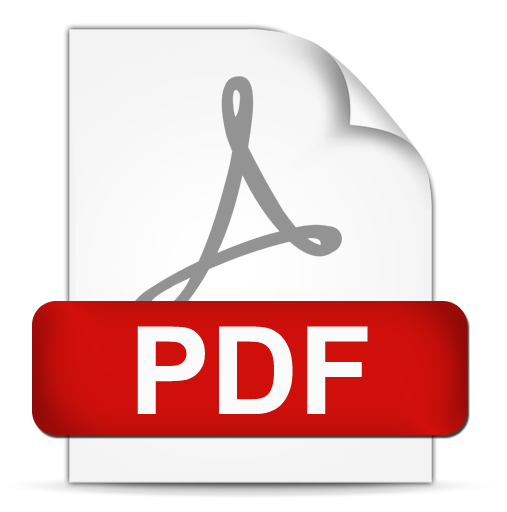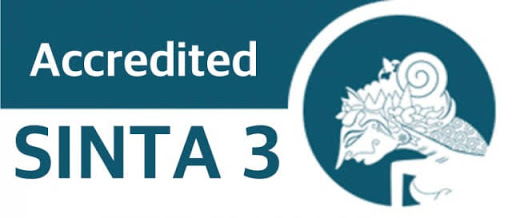Application Failure Mode Effect Analysis for Risk Management in New Costumer Acceptance Project in Garment Industry with approaching Project Management Body of Knowledge
 Abstract Views:
585 times
Abstract Views:
585 times
 PDF Downloads:
447 times
PDF Downloads:
447 times
Abstract
Purpose: This research aims to identify risks at the time of fulfillment of the requirements set by the customer and determine their mitigation.
Method: In order to achieve the goal, researchers use the PMBOK approach that focuses on risk management by creating WBS and RBS. From the existing risks assessed using the FMEA method by conducting a survey to get the S, O and D values then calculating the RPN.
Result: the highest RPN value in this study is 330 at risk 5.2. The understanding of PIC system and procedures in making the system, based on the result of brainstorming is decided that the mitigation is recruiting employee who is experienced in applying BSCI and factory evaluation audits due to the unavailability of employees who will become PIC compliance.
Downloads
References
Anner, M. (2020). Squeezing workers’ rights in global supply chains: purchasing practices in the Bangladesh garment export sector in comparative perspective. Review of International Political Economy, 27(2), 320–347. https://doi.org/10.1080/09692290.2019.1625426
Barghi, B., & Shadrokh sikari, S. (2020). Qualitative and quantitative project risk assessment using a hybrid PMBOK model developed under uncertainty conditions. Heliyon, 6(1), e03097. https://doi.org/10.1016/j.heliyon.2019.e03097
Chaouch, S., Mejri, A., & Ghannouchi, S. A. (2019). A framework for risk management in Scrum development process. Procedia Computer Science, 164, 187–192. https://doi.org/10.1016/J.PROCS.2019.12.171
Domingos, P., Rita, A., Terra, T., & Ignácio, S. R. (2008). FMEA as a Tool for Managing Risks in ICT Projects , based on the PMBOK. Asian Journal of Business and Management Sciences, 3(12), 1–24.
Frederico, G. F. (2021). Project Management for Supply Chains 4.0: A conceptual framework proposal based on PMBOK methodology. Operations Management Research, 14(3–4), 434–450. https://doi.org/10.1007/S12063-021-00204-0/METRICS
Ghadage, Y. D., Narkhede, B. E., & Raut, R. D. (2020a). Risk management of innovative projects using FMEA; A case study. International Journal of Business Excellence, 20(1), 70–97. https://doi.org/10.1504/IJBEX.2020.104841
Ghadage, Y. D., Narkhede, B. E., & Raut, R. D. (2020b). Risk management of innovative projects using FMEA; a case study Risk management of innovative projects using FMEA 71. In Int. J. Business Excellence (Vol. 20, Issue 1).
Ghadage, Y. D., Narkhede, B. E., & Raut, R. D. (2020c). Risk management of innovative projects using FMEA; a case study Risk management of innovative projects using FMEA 71. In Int. J. Business Excellence (Vol. 20, Issue 1).
Jahangoshai Rezaee, M., Salimi, A., & Yousefi, S. (2017). Identifying and managing failures in stone processing industry using cost-based FMEA. International Journal of Advanced Manufacturing Technology, 88(9–12), 3329–3342. https://doi.org/10.1007/S00170-016-9019-0/METRICS
Kim, K. O., & Zuo, M. J. (2018). General model for the risk priority number in failure mode and effects analysis. Reliability Engineering & System Safety, 169, 321–329. https://doi.org/10.1016/J.RESS.2017.09.010
Mahardika, E. P., Muslim, F., Latief, Y., & Nugroho, P. S. (2023). Evaluation of the Implementation of Fire Safety Management Based on Work Breakdown Structure Affecting the Insurance Premium Costs of High-Rise Lecture Buildings. Lecture Notes in Civil Engineering, 225, 369–379. https://doi.org/10.1007/978-981-16-9348-9_32/COVER
Pangastuti, D. A., & Latief, Y. (2023). Development of Preventive Maintenance Guidelines for Simple-Classification Government Buildings Based on Work Breakdown Structure Within the DKI Jakarta Provincial Government. Lecture Notes in Civil Engineering, 225, 339–353. https://doi.org/10.1007/978-981-16-9348-9_30/COVER
Pertiwi, H. (2017). Implementasi Manajemen Risiko Berdasarkan PMBOK Untuk Mencegah Keterlambatan Proyek Area Jawa Timur (Studi Kasus: PT. Telkom). Jurnal Studi Manajemen Dan Bisnis, 4(2), 96–108. https://doi.org/10.21107/jsmb.v4i2.3959
Rahimi, Y., Tavakkoli-Moghaddam, R., Iranmanesh, S. H., & Vaez-Alaei, M. (2018). Hybrid Approach to Construction Project Risk Management with Simultaneous FMEA/ISO 31000/Evolutionary Algorithms: Empirical Optimization Study. Journal of Construction Engineering and Management, 144(6), 04018043. https://doi.org/10.1061/(asce)co.1943-7862.0001486
Raz, T., & Hillson, D. (2005). A Comparative Review of Risk Management Standards. Risk Management 2005 7:4, 7(4), 53–66. https://doi.org/10.1057/PALGRAVE.RM.8240227
Santos, F. R. S. dos. (2008). Fmea and Pmbok Applied To Project Risk Management. JISTEM Journal of Information Systems and Technology Management, 5(2), 347–364. https://doi.org/10.4301/s1807-17752008000200008
Xiao, N., Huang, H. Z., Li, Y., He, L., & Jin, T. (2011). Multiple failure modes analysis and weighted risk priority number evaluation in FMEA. Engineering Failure Analysis, 18(4), 1162–1170. https://doi.org/10.1016/J.ENGFAILANAL.2011.02.004
Zaheri, A., Rojhani, M., & Rowe, S. F. (2022). Evaluating PMBOK for Small Project Management. International Journal of Industrial Engineering & Production Research, 33(1), 1–17.
Zammori, F., & Gabbrielli, R. (2012). ANP/RPN: a multi criteria evaluation of the Risk Priority Number. Quality and Reliability Engineering International, 28(1), 85–104. https://doi.org/10.1002/QRE.1217
Zamroni Salim, & Ernawati. (2015). Info Komoditi Pakaian Jadi Info Komoditi Pakaian Jadi. Badan pengkajian dan PengembanganKebijakan Perdagangan Kementrian Perdagangan RI dan Al Mawardi Prima.

This work is licensed under a Creative Commons Attribution 4.0 International License.
Articles published in Journal of Entrepreneurship & Business are licensed under a Creative Commons Attribution 4.0 International (CC BY) license. You are free to copy, transform, or redistribute articles for any lawful purpose in any medium, provided you give appropriate credit to the original author(s) and the journal, link to the license, and indicate if changes were made.
Authors submitting to this journal agree to make their work freely available under the CC BY 4.0 license, ensuring broad dissemination and reuse. The full license details can be accessed at https://creativecommons.org/licenses/by/4.0/.
This ensures that they receive the maximum dissemination because there are no barriers to access. This license allows readers to disseminate and reuse the paper, but always requires them to grant the authors and the first publication full credit.
While JEB upholds ethical publishing standards, the responsibility for ensuring originality and compliance with copyright regulations lies with the authors. The journal is not liable for any legal claims related to the content of published articles.
For further inquiries, please contact the editorial team.

 DOI:
DOI:











